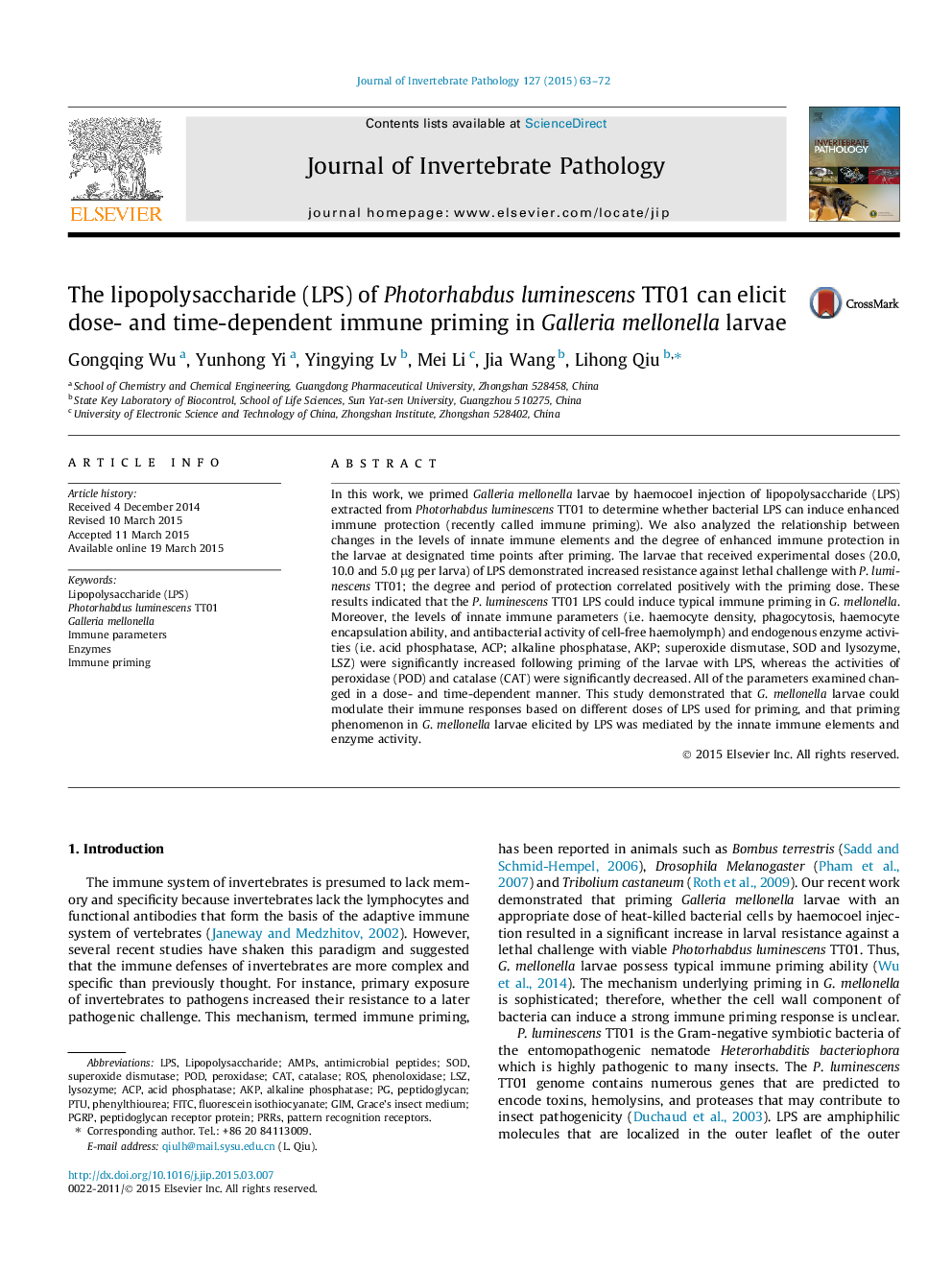| کد مقاله | کد نشریه | سال انتشار | مقاله انگلیسی | نسخه تمام متن |
|---|---|---|---|---|
| 4557641 | 1628225 | 2015 | 10 صفحه PDF | دانلود رایگان |

• Pre-exposure G. mellonella larvae to LPS could induce an enhanced immune protection.
• The parameters examined changed in dose- and time-dependent manners.
• Priming response in G. mellonella larvae elicited by LPS was mediated by innate immune elements.
In this work, we primed Galleria mellonella larvae by haemocoel injection of lipopolysaccharide (LPS) extracted from Photorhabdus luminescens TT01 to determine whether bacterial LPS can induce enhanced immune protection (recently called immune priming). We also analyzed the relationship between changes in the levels of innate immune elements and the degree of enhanced immune protection in the larvae at designated time points after priming. The larvae that received experimental doses (20.0, 10.0 and 5.0 μg per larva) of LPS demonstrated increased resistance against lethal challenge with P. luminescens TT01; the degree and period of protection correlated positively with the priming dose. These results indicated that the P. luminescens TT01 LPS could induce typical immune priming in G. mellonella. Moreover, the levels of innate immune parameters (i.e. haemocyte density, phagocytosis, haemocyte encapsulation ability, and antibacterial activity of cell-free haemolymph) and endogenous enzyme activities (i.e. acid phosphatase, ACP; alkaline phosphatase, AKP; superoxide dismutase, SOD and lysozyme, LSZ) were significantly increased following priming of the larvae with LPS, whereas the activities of peroxidase (POD) and catalase (CAT) were significantly decreased. All of the parameters examined changed in a dose- and time-dependent manner. This study demonstrated that G. mellonella larvae could modulate their immune responses based on different doses of LPS used for priming, and that priming phenomenon in G. mellonella larvae elicited by LPS was mediated by the innate immune elements and enzyme activity.
Figure optionsDownload as PowerPoint slide
Journal: Journal of Invertebrate Pathology - Volume 127, May 2015, Pages 63–72